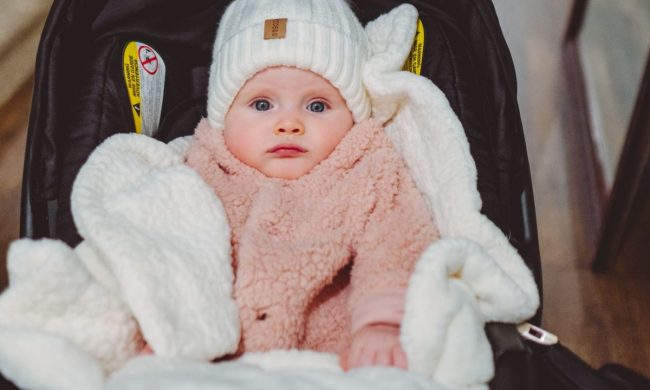Learning how to decipher what a baby’s cry means can be a daunting and frustrating task. Does the cry mean it’s time for a diaper change or is the baby hungry? Babies understand words before they are able to communicate with parents verbally. Between the ages of 12 and 18 months, most babies begin putting sounds together to form words. Until then, finding out what baby wants can be a series of tries and fails. This is where sign language comes in. Sign language allows deaf and hearing-impaired individuals to communicate through visual gestures or signs. Many are left wondering how to teach a baby sign language to help baby express themself.
The origins of teaching babies sign language actually date back to the 19th century when linguist William Dwight Whitney made an interesting observation. Whitney noticed babies with deaf parents were already communicating with their parents at 6 months of age while babies of hearing parents didn’t begin speaking verbally for another six months or more. Dr. Joseph Garcia took Whitney’s observations further in the 80s when he began teaching sign language to non-hearing impaired families. By the 2000s, baby sign language became more than an isolated study. Today, many families are using baby sign language to communicate with their babies thanks to books and videos available with information on how to easily do so.

When should you begin teaching a baby sign language?
There are different schools of thought on when to begin baby sign language. Some experts say shortly after birth while others pinpoint a range between 2 to 4 months. Since all children develop at their own rate, there isn’t a hard and fast timetable. When babies begin focusing on their hands or noticing the hands of their parents, that’s a clue the little ones are ready to begin learning baby sign language.
Teach babies sign language
Baby sign language typically uses the same signs utilized in American Sign Language, but there are differences. Sign language for babies uses simple signs. Of course, there are a multitude of books on the subject as well as videos floating around online not to mention classes. The truth is, if you want to teach your baby sign language, it doesn’t have to be complicated. With consistency, repetition, and patience, your baby will be well on their way to learning how to sign.

Keep it simple
When parents are beginning to teach a baby basic signs, it’s important not to overwhelm the child. There are around 25 signs that are ideal for a baby’s sign language vocabulary, but those should be introduced slowly. Instead of going overboard with signs, choose three to five signs that best fit into your family’s daily needs. Meal-related signs like eat, done, and more are an ideal place to start a baby’s sign language journey.
How to teach a baby to sign
Teaching a baby to understand sign language is actually as simple as associating a word like eat with a gesture or sign. The most important step is to say the word at the same time as using the sign. Over time, the baby will begin to associate the sign with the word and grasp the meaning.
Tips for teaching a baby sign language
- Be sure to speak slowly and clearly.
- Signs for things like milk will be easier for baby’s to understand at first.
- Use the word and the sign consistently and have caregivers do the same.
- Be patient.
Signing back
Teaching a baby sign language does take a lot of repetition and patience. If your baby isn’t signing back, don’t give up. The process does take time. Babies will begin to understand the signs before using them. It may take two months or more of signing before you start to see progress, which is why it’s important to be consistent.
Common signs
The signs used for baby sign language are simple. Here are five basic signs to start with:
Eat or hungry
Babies often cry when they’re hungry, which makes this sign a perfect first one. Using your left hand, make a “c” and hold it just below your mouth. As you say eat, slide the hand slowly down to your stomach.
More
More please? Teach baby this easy sign by pinching together the fingers and thumb on both hands, making an o. Tap the fingers and thumb together on both hands while saying more.
All done
This sign is perfect for letting you know when baby is finished eating or playing in the bath. Hold your hands up with the palms facing you. Then, turn the palms toward the baby while saying all done.
Sleep
With this sign, baby can let you know it’s time for a nap. Hold your fingers open in front of your face with the palms facing toward you. Close your eyes as you draw your hand down to your chin to make a fist as you say sleep.
Play
Time for some peek-a-boo? Teach baby to sign play. Make a fist with both hands, but extend the pinkies and thumbs. Start with the palms facing you and gently twist the fists from back to front while saying play.
Don’t give up
Teaching your baby sign language is a great way to open up the lines of communication as his or her verbal skills develop. Consistency, repetition, and, of course, patience are key to teaching babies sign language, but when your baby signs back at you for the first time, the process will all be worth it. Once baby knows how to better communicate with you, it will make life so much easier for the entire family.



